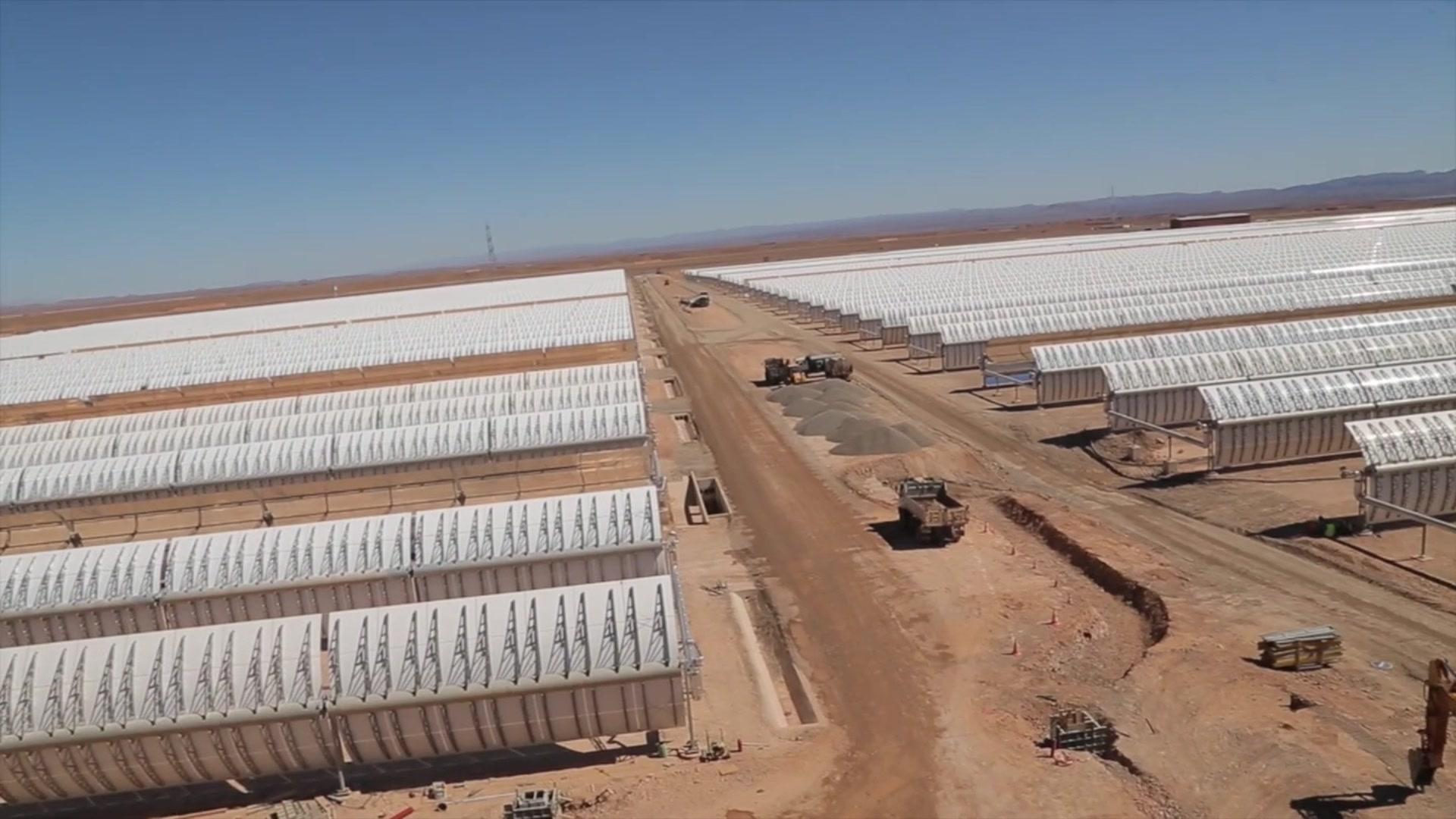Viewpoint: Why green campaigners should embrace capitalism
- Published
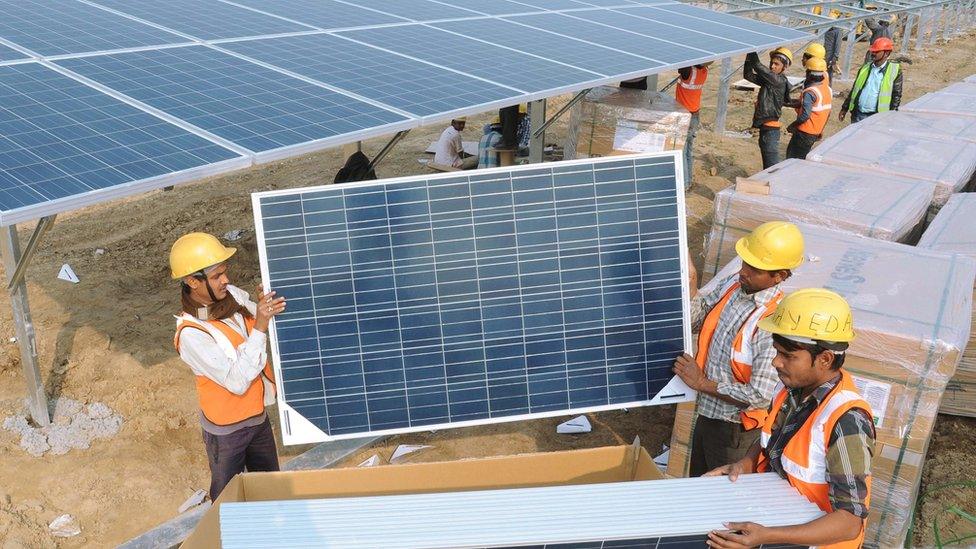
Many environmentalists believe capitalism is the source of the climate change problem
For some reason green campaigners don't tend to be very interested in international finance.
Many environmentalists believe capitalism - and the financial architecture that supports it - is the source of the climate change problem, rather than a potential solution.
That is a mistake.
Because if anything is likely to save us all from the catastrophe that is uncontrolled global warming, it is global capitalism.
Some of you may think that sounds like opinion, but hear me out.
It is my contention - held for some time - that global capitalism is the only engine (if you'll excuse the pun) capable of driving the transformation towards a low-carbon economy.
And the good news is that it is already happening.
There are two key reasons.
Investment decisions
The first is the collapse in the price of solar energy.
The cost of generating a kilowatt-hour of electricity from solar in a reasonably sunny country is expected to be the same as that from a coal-fired power station within a year or two.
Indeed, In India - where I currently live - some producers are now selling solar-generated electricity for the knockdown price of just 4.34 rupees (4.5 pence; 7 cents) a kilowatt-hour!
But the other reason is international finance - and here's where it gets interesting.
The economics of renewable energy are very different from those of other sources of power.
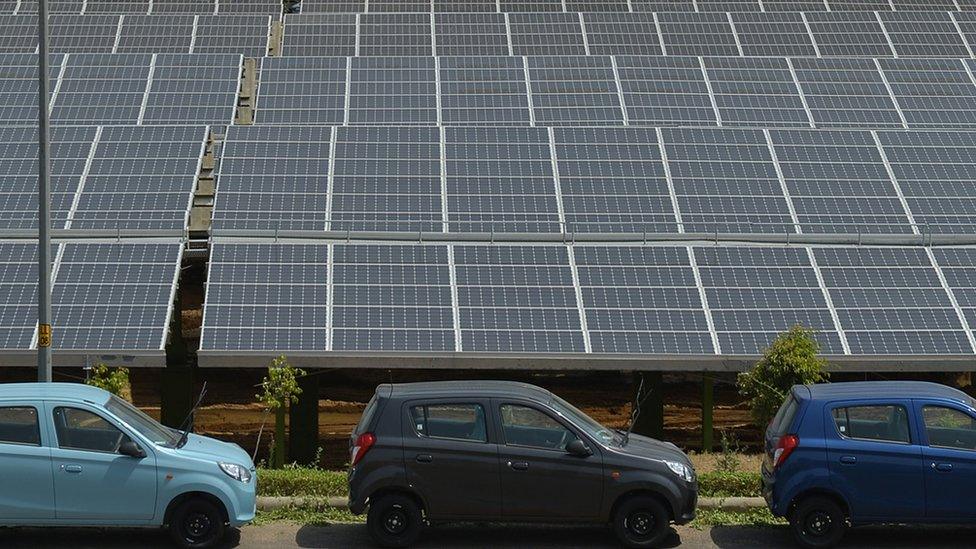
In developing countries like India, solar plants are simply too expensive to build
Unlike coal, gas or nuclear power stations, renewable sources don't have to pay anything for their fuel. The sun, wind or water comes - pretty much - free.
That transforms the nature of the investment decision.
Just think for a moment about what it means.
With traditional fossil fuel power plants, the investment case will be made as a balance between the costs of building the power station, the future price of electricity and a projection of the future costs of the fuel needed to keep it producing power.
With renewables it is almost all about the initial capital cost - how much it costs to build the thing in the first place - and the electricity price.
That means the cost of solar in the long run is a combination of the cost of the panels, the price of electricity and - crucially - the long-term cost of borrowing the money you need to buy and install them.
Money matters
That created a big problem with getting the investment needed for renewable technologies in developing countries, because these tend to have much higher interest rates than more advanced economies.
At the moment, for example, long-term interest rates in most of the developed world are bumping along just above zero percent a year - meaning so long as you can persuade someone to lend you cash, you are going to get it for a couple of percent a year.
Meanwhile here in India the bank base rate is 6.5%, and even that is historically low.
So how does that affect investment in solar and other renewables?
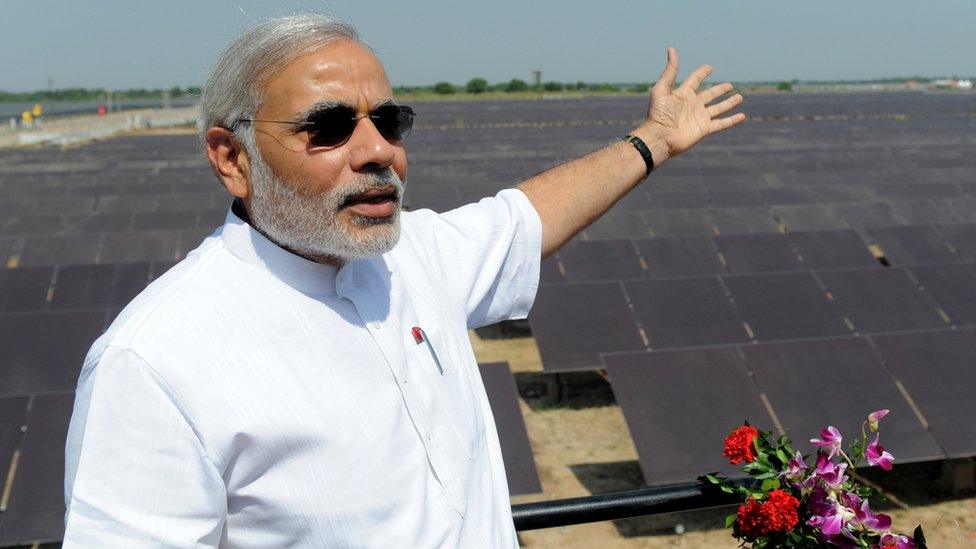
Indian Prime Minister Narendra Modi has said he wants to see 100 gigawatts of solar capacity built in the next five years
It means it is way more expensive, and therefore much less likely to be profitable.
Let's say my new solar plant costs the rupee equivalent of - say - $1m to build.
I'm going to be paying an absolute minimum of $70,000 a year in interest (if I'm very creditworthy and very lucky) - compared to the $30,000 or so you are likely to pay in the West.
Most investors in solar in India are paying more like 10% or 12%, according to industry insiders.
In effect, money is the most expensive input.
What that means is that it is going to take more than just tumbling solar prices to get people to invest.
And that is where a radical plan by the Indian Power Minister, Piyush Goyal, comes in.
Innovative financing
In London last week he said India is open to the idea of pricing solar tariffs in dollars, yen and euros.
So instead of being paid for the power you generate in rupees, now you will be able to get dollars, yen or euros.
Why is that important?
What it does is strip out the currency risk - the danger that all your profits will be eaten up if the exchange rate goes against you - and the danger that inflation will erode away the real value of the cash.
That, in turn, means it will be much easier to raise money in low-interest countries to invest in solar and other renewables in India.
And that means returns - profits - are likely to be much higher, even if the cost of solar electricity remains low - check out the tables in this excellent article, external.
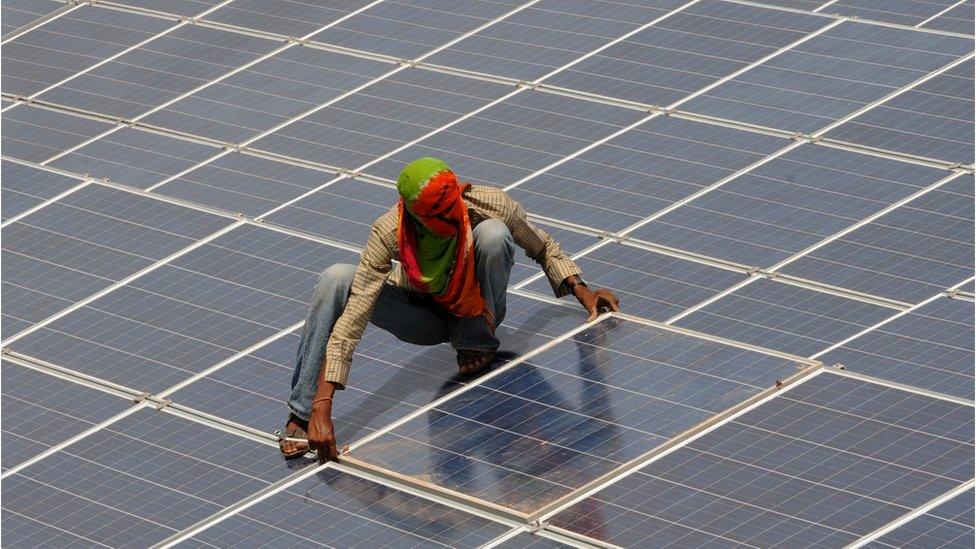
India's energy minister said the country is open to the idea of pricing solar tariffs in dollars, yen and euros
And high profits are what lures in money, and money is (of course) what's needed if these plants are going to be built at all.
India's Prime Minister, Narendra Modi, has said he wants to see 100 gigawatts of solar capacity built in the next five years.
No country has ever built solar at that rate and it would leave India with three times the solar capacity of Germany.
But innovative financing deals like Mr Goyal's may be just what it takes to make his ambitious plan a reality.
And if you don't agree with that sentiment, let's debate it. I'm @BBCJustinR, external on Twitter.
- Published27 February 2016
- Published9 October 2015

- Published30 December 2015
